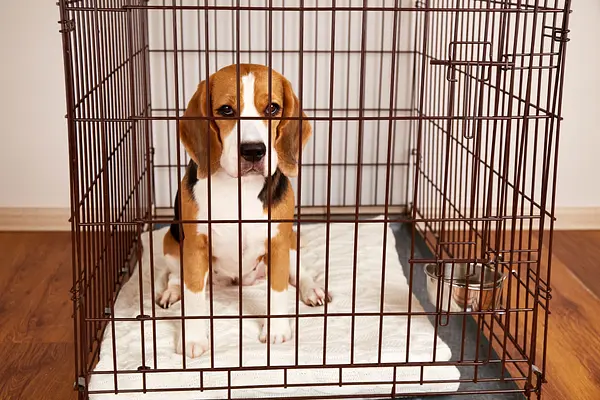As a new puppy owner, you may have heard about crate training and wondered if it's right for your furry friend. Crate training can be an incredibly useful tool in helping your puppy adjust to their new home, establish a routine, and develop good habits. In this post, we'll explore the benefits of crate training and provide you with a step-by-step guide to introducing a crate to your puppy.
Benefits of Crate Training
Provides a safe space: A crate gives your puppy a secure, den-like environment where they can relax and feel protected.
Aids in housetraining: Puppies naturally avoid soiling their sleeping area, so a crate can help them learn to hold their bladder and bowels until they are taken outside.
Prevents destructive behavior: When unsupervised, puppies can get into trouble. A crate keeps them safe and prevents chewing or other undesirable behaviors.
Encourages independence: A crate helps your puppy learn to be comfortable alone, reducing the risk of separation anxiety.
Simplifies travel: A crate-trained puppy is easier to travel with, whether by car or plane, and will have a familiar space in new environments.
Step-by-Step Guide to Introducing a Crate
Choose the right crate: Select a crate that is large enough for your puppy to stand up, turn around, and lie down comfortably, but not so large that they can use one end as a bathroom.
Create a positive association: Place the crate in a common area of your home and make it inviting with a soft bed, toys, and treats. Allow your puppy to explore the crate on their own terms.
Feed meals in the crate: Begin feeding your puppy their meals inside the crate, with the door open. This will help them associate the crate with positive experiences.
Introduce short crate sessions: Encourage your puppy to enter the crate with a treat and a verbal cue, like "crate." Close the door for a few seconds, then open it and reward your puppy. Gradually increase the duration of crate sessions.
Establish a crate routine: Use the crate for short periods when you're home, such as during mealtimes or quiet times. This will help your puppy learn to settle and relax in the crate.
Crate your puppy at night: Place the crate near your bed and encourage your puppy to sleep there overnight. They may whine initially, but be patient and consistent.
Remember, crate training should always be a positive experience for your puppy. Never use the crate as punishment, and ensure your puppy has plenty of opportunities for exercise, playtime, and potty breaks.
Using the "Doggy Time" App
To help you stay on track with your puppy's crate training, consider using the "Doggy Time" app. This app allows you to collaborate with family members on logging your puppy's activities, including crate training sessions. You can set goals, track your puppy's progress, and celebrate milestones together.
The "Doggy Time" app also features smart alarms and scheduling, so you can plan your puppy's daily routine and ensure that crate training remains consistent. By setting reminders for regular crate sessions and using the app to log your puppy's experiences, you'll be able to provide a structured crate training program that helps your puppy feel secure and comfortable in their new home.
With the help of the "Doggy Time" app and a commitment to positive, gradual crate training, you and your puppy will be well on your way to enjoying the many benefits of a crate-trained canine companion. Happy crate training!






